Iceland
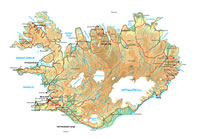
Iceland is an island situated in the North Atlantic ocean and is situated near the Arctic Circle. It comprises of one large island and numerous smaller ones. The land is around 103,000 km2. The capital of Iceland is Reykjavík.
Icelandic flag 
The Icelandic flag is a blue field with a red cross bordered in white.
The colours remind us of our nature; blue for the sky, white for ice and red for fire.
The shield of Iceland.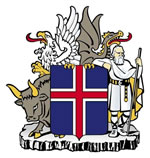
The shield bearers are the four guardian spirits of Iceland as described in Heimskringla [by Snorri Sturluson, 13th century]:
A bull on the right side of the shield; a giant, on the left; a vulture on the right above the bull; and a dragon on the left, above the giant. The shield rests on a plate of columnar basalt.
Geography
 Iceland is an island situated on the Mid-Atlantic Ridge
Iceland is an island situated on the Mid-Atlantic Ridge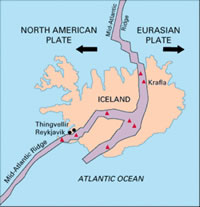
and is therefore volcanically active.
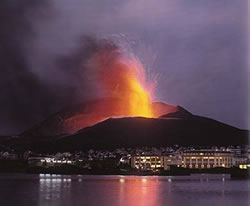 Wherever you go you can see Iceland in making. The forces that make the landscape is weather, water, glacier, volcano eruption and earthquakes. Iceland is unique for the striking
Wherever you go you can see Iceland in making. The forces that make the landscape is weather, water, glacier, volcano eruption and earthquakes. Iceland is unique for the striking 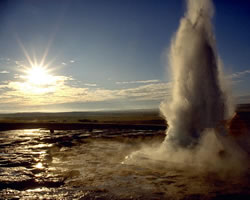 contrasts in its landscapes. Glaciers and mountains with over 200 volcanoes although but a few of them are active today. Iceland is very young geologically and the youngest country in Europe. It was formed about 16 million years ago by volcanic eruptions on the North Atlantic seabed.
contrasts in its landscapes. Glaciers and mountains with over 200 volcanoes although but a few of them are active today. Iceland is very young geologically and the youngest country in Europe. It was formed about 16 million years ago by volcanic eruptions on the North Atlantic seabed.
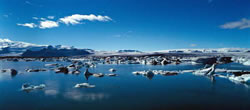
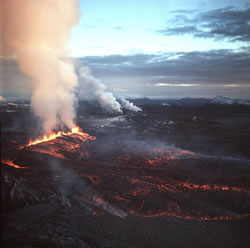
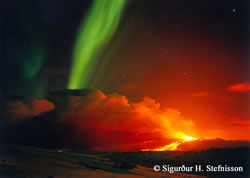
Language
The language in Iceland is Icelandic and comes from the Vikings. The vocabulary and pronunciation has developed over the centuries. The population is around 300.000 and most of the people live in the capital Reykjavík and surroundings. The others lives in villages and on farms throughout the countryside. Most of the towns and villages are situated along the coastline but the Highlands are uninhabitable.
